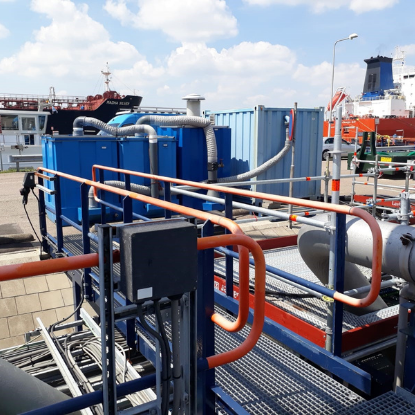Physical contaminant removal
Soil vapour extraction is a technology to remove volatile compounds from the unsaturated soil. Creating a vacuum in the soil removes vapours containing volatile contaminants. Soil vapour concentrations decrease causing contamination to volatilize to re-establish the equilibrium between adsorbed and vapour phase contaminants. Concentrations decline with every vapour volume replacement, cleaning the soil. Extracted vapours typically are treated above ground.
Air Sparging
Air Sparging involves injecting pressurized ambient air in the soil below the groundwater level. Volatile contaminants transfer form the dissolved phase into the vapour phase and migrate into the unsaturated soil. Often, natural biodegradation in the unsaturated soil suffices to destroy the contaminants. In other cases, vapours are captured for above ground treatment.
Groundwater Technology also deploys air sparging to maintain groundwater oxygen concentration at levels that sustain aerobic biodegradation, causing the contaminants to be destroyed in situ. This technology is refered to as biosparging.
Another application of air sparging is increasing the yield of phase separated product removal. Air sparging causes imbibition in the soil pores, which mobilizes phase separated product trapped in tiny micelles in the soil pores.


Pump & Treat
The most ‘classic’ physical removal technology is pump & treat. Contaminants are extracted dissolved in groundwater. In many cases, extracted contaminated groundwater is treated in existing wastewater treatment systems and discharged into surface water. In some cases, treated groundwater is enriched with amendments and re-injected to increase in situ remedial processes.
Free Phase Removal
Free Phase Removal involves extracting liquid contaminants in pure, liquid, form. Groundwater Technology originated from this technology: the company was founded in 1979 when the Oil Recovery Systems Filter Scavengers were being deployed to recover large volumes of free phase hydrocarbons at USA petrochemical sites. The filter scavengers are still in production.
Nowadays, we deploy several technologies to remove free phase contaminants, including:
